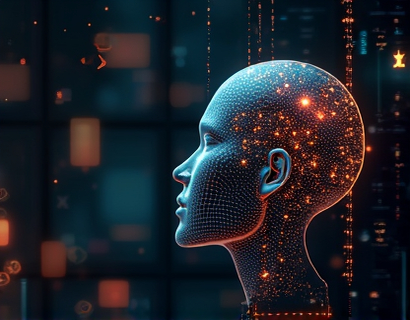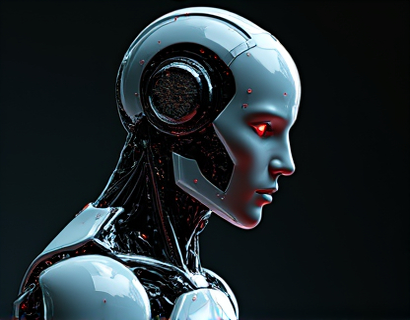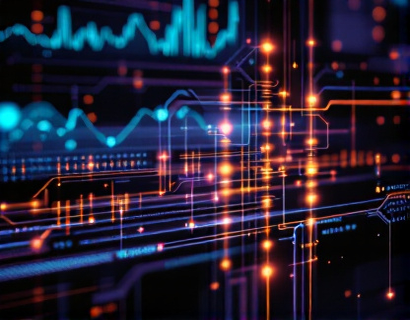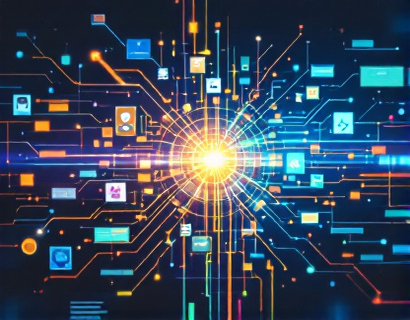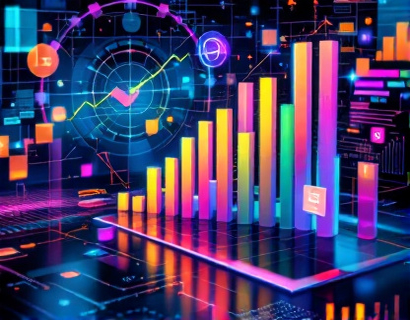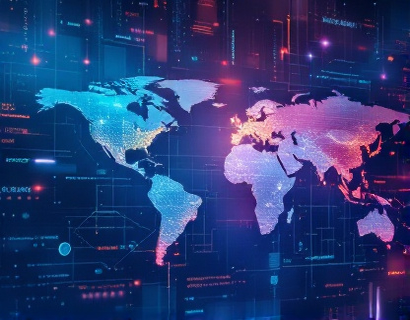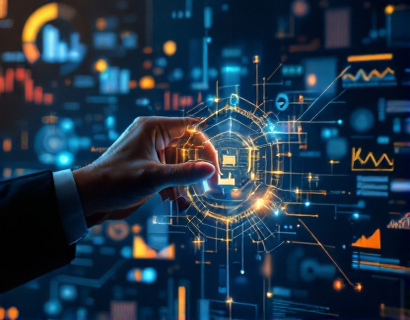Unleashing Next-Gen Productivity: The Synergy of Crypto and AI
The intersection of cryptocurrency and artificial intelligence (AI) is giving rise to a new era of productivity tools and digital solutions. For tech enthusiasts and early adopters, this blend offers unprecedented opportunities to streamline tasks, enhance efficiency, and explore innovative applications. This article delves into the transformative potential of combining these two cutting-edge technologies, providing insights into how they are reshaping the digital landscape.
The advent of blockchain technology has not only revolutionized financial systems but also opened new avenues for AI development. The decentralized and secure nature of cryptocurrencies provides a robust foundation for AI applications that require high levels of trust and data integrity. This synergy is leading to the creation of advanced tools that leverage the strengths of both technologies, resulting in more efficient and secure digital solutions.
Enhanced Data Security and Privacy
One of the primary benefits of integrating AI with cryptocurrency is the significant improvement in data security and privacy. AI algorithms can analyze vast amounts of data to identify patterns and anomalies, enhancing the detection of fraudulent activities. When combined with the immutable and transparent nature of blockchain, this creates a nearly unhackable system for storing and processing sensitive information.
For instance, AI-driven security protocols can monitor blockchain transactions in real-time, identifying and mitigating potential threats before they become issues. This dual-layer approach ensures that data remains secure and private, which is crucial for businesses and individuals alike. The confidence in data integrity fosters greater adoption of digital solutions, driving further innovation and productivity gains.
Optimized Smart Contracts
Smart contracts, self-executing contracts with the terms directly written into code, are a cornerstone of blockchain technology. AI enhances the functionality of smart contracts by enabling more complex and adaptive logic. AI can analyze historical data and predict future trends, allowing smart contracts to make more informed and dynamic decisions.
For example, in supply chain management, AI-powered smart contracts can automatically adjust terms based on real-time data such as inventory levels, demand forecasts, and shipping conditions. This not only streamlines operations but also reduces the need for manual intervention, saving time and resources. The result is a more efficient and reliable supply chain, which is essential for businesses aiming to stay competitive in the global market.
Intelligent Automation and Bots
AI-driven automation and bots are transforming the way tasks are performed in various industries. When integrated with cryptocurrency, these tools can operate on a decentralized network, ensuring transparency and reducing the risk of central points of failure. AI bots can handle a wide range of tasks, from customer service and data entry to complex financial analysis.
In the context of cryptocurrency, AI bots can manage digital assets, execute trades, and monitor market conditions with high precision. These bots can adapt to changing market dynamics, optimizing investment strategies and maximizing returns. The combination of AI's decision-making capabilities and cryptocurrency's decentralized nature creates a powerful tool for financial management and investment.
Decentralized Applications (DApps)
Decentralized applications, or DApps, are a prime example of the innovative solutions emerging from the fusion of AI and cryptocurrency. DApps run on a blockchain network, leveraging AI to provide intelligent and responsive user experiences. These applications can operate without a central authority, ensuring greater autonomy and control for users.
AI enhances DApps by enabling features such as personalized recommendations, predictive analytics, and automated workflows. For instance, a DApp for project management can use AI to assign tasks based on team members' availability and expertise, optimize project timelines, and provide real-time updates. This level of automation and intelligence significantly boosts productivity and efficiency.
Enhanced User Experiences
The integration of AI with cryptocurrency also leads to more intuitive and user-friendly digital solutions. AI can analyze user behavior and preferences to tailor experiences, making applications more accessible and efficient. For example, AI-driven interfaces can adapt to individual users, providing a customized experience that enhances usability and satisfaction.
In the realm of digital wallets, AI can improve the user experience by simplifying complex processes such as transaction verification and wallet management. AI-powered wallets can predict user needs, suggest optimal transaction times, and even provide security alerts, all while maintaining the security and privacy that cryptocurrency offers.
Supply Chain Transparency and Traceability
Supply chain management is another area where the combination of AI and cryptocurrency can drive significant improvements. AI can track and analyze data throughout the supply chain, ensuring transparency and traceability. This is particularly important for industries such as food, pharmaceuticals, and luxury goods, where authenticity and quality are paramount.
Cryptocurrency adds an additional layer of security by providing a tamper-proof record of transactions. AI can verify the authenticity of products at each stage, from production to delivery, reducing the risk of fraud and counterfeiting. This not only builds trust among consumers but also optimizes the supply chain process, reducing costs and improving efficiency.
Financial Inclusion and Microtransactions
The synergy of AI and cryptocurrency is also making a significant impact on financial inclusion and microtransactions. Traditional financial systems often exclude a large portion of the global population due to high fees and complex processes. Cryptocurrency, combined with AI, can provide a more accessible and cost-effective alternative.
AI can facilitate microtransactions by optimizing the process and reducing fees. For example, AI-driven platforms can automate the conversion of cryptocurrencies to fiat currency, making it easier for individuals in different regions to transact. This democratizes access to financial services, empowering more people to participate in the global economy.
Challenges and Considerations
While the potential of AI and cryptocurrency is vast, there are challenges that need to be addressed. Regulatory frameworks are still evolving, and the lack of standardization can create uncertainty for developers and users. Additionally, the technical complexity of these technologies requires a skilled workforce to develop and maintain solutions.
Another consideration is the environmental impact of cryptocurrency mining, which can be energy-intensive. However, the development of more efficient consensus mechanisms and the use of renewable energy sources are helping to mitigate this issue. AI can also play a role in optimizing energy usage, further aligning these technologies with sustainability goals.
Future Prospects
The future of AI and cryptocurrency is bright, with ongoing advancements promising even more innovative applications. As the technology matures, we can expect to see more seamless integration, enhanced security features, and broader adoption across various industries. The potential for creating smart cities, decentralized governance, and new forms of digital identity is immense.
For tech enthusiasts and early adopters, the intersection of AI and cryptocurrency offers a wealth of opportunities to explore and contribute to this exciting field. By staying informed and engaged, individuals can leverage these technologies to drive productivity, innovation, and positive change.





